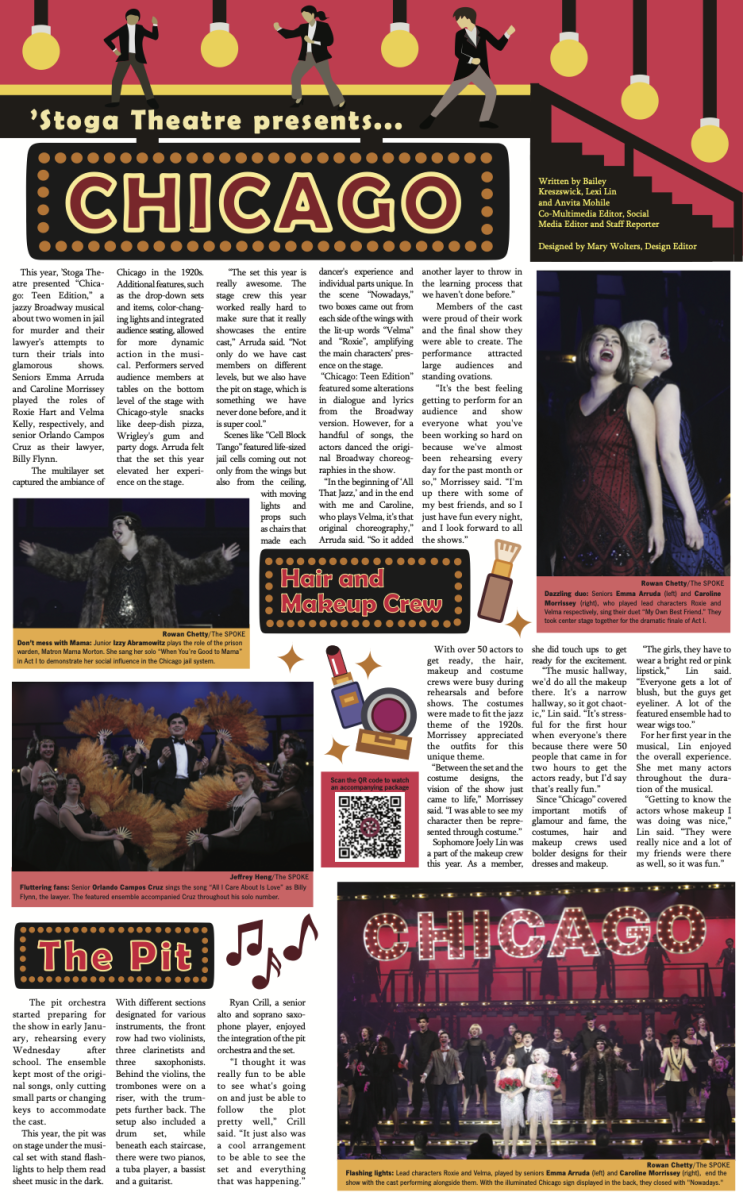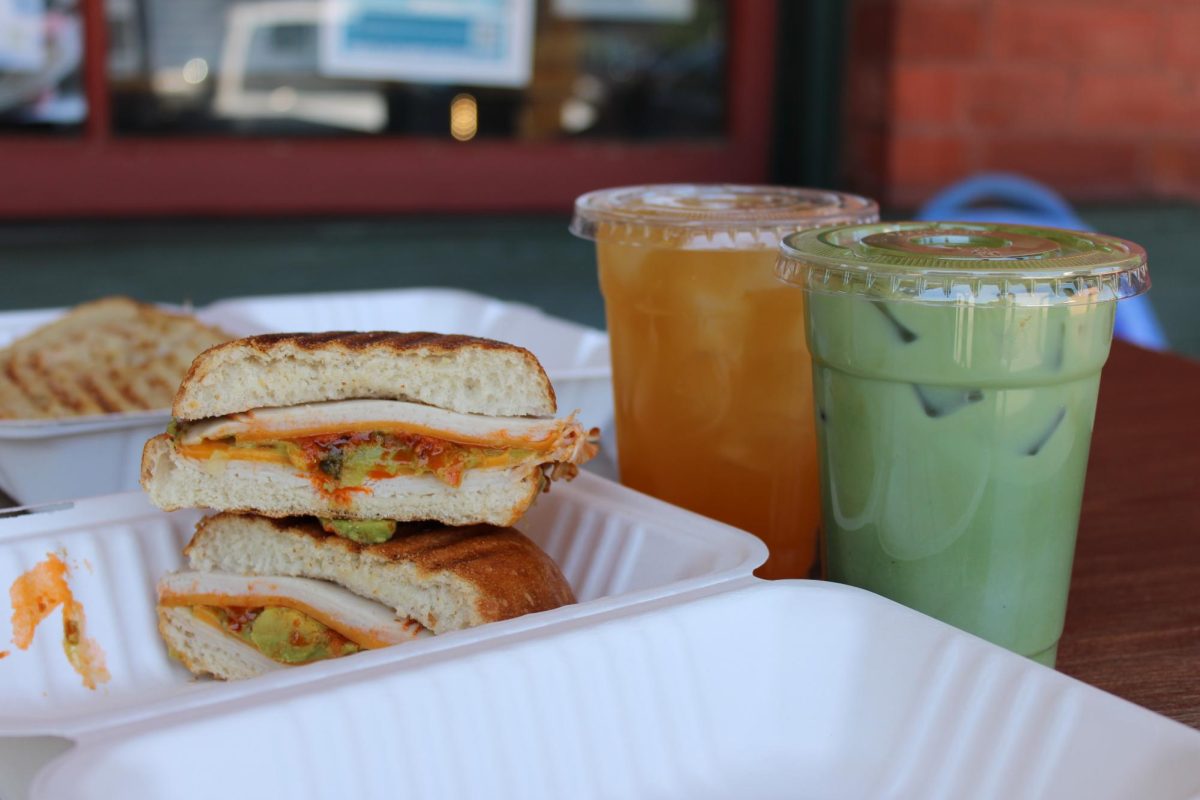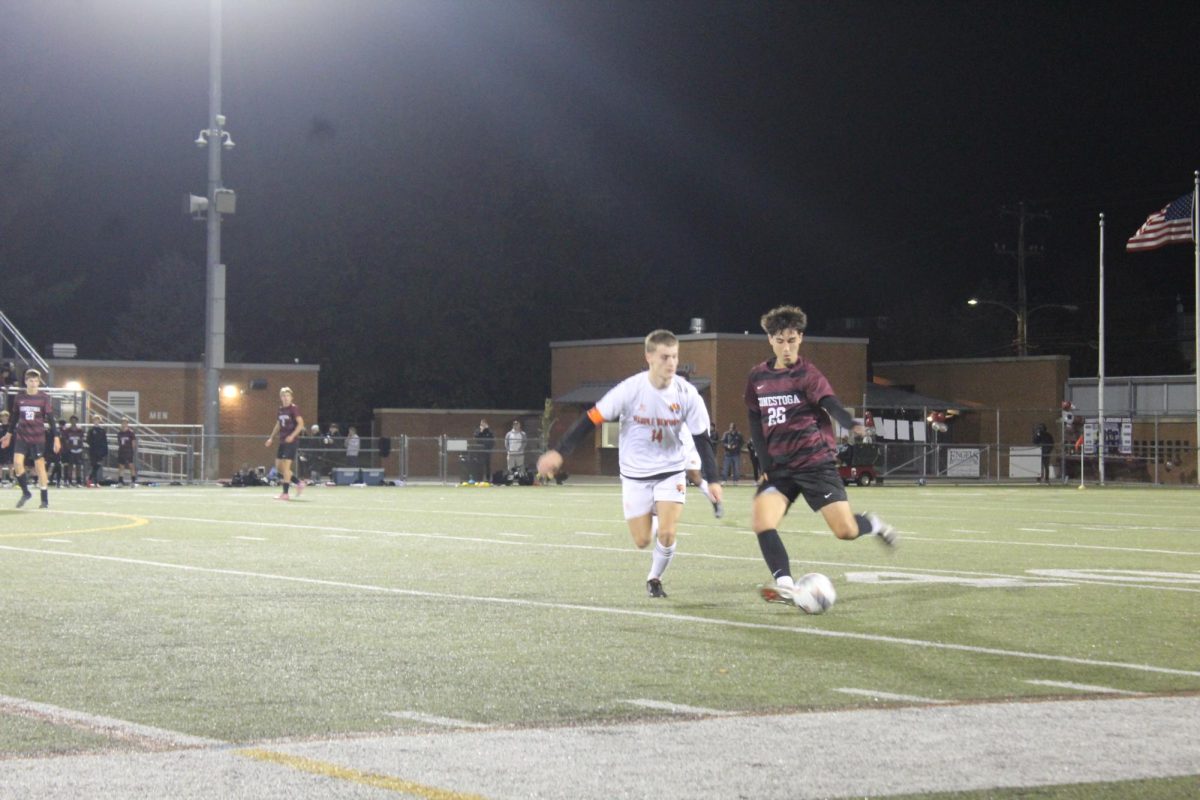By Hiba Samdani and George Zhang, Co-Editor-in-Chief and Photography Editor
“Crazy.” “A roller coaster.” “Emotionally-charged.” No single word could summarize the 2021-22 school year, but students used these words to describe the year.
From a new expansion project to an anti-mask walkout, Conestoga underwent significant changes and faced unexpected circumstances. The looming threat of the COVID-19 pandemic further complicated students’ return from a hybrid and virtual school year, presenting an additional hurdle to the school’s path to normalcy.
For many students, the mask protest was the most divisive and notable event of the school year. Led by junior Hayden McLellan, more than 50 students gathered at the base of the atrium steps on Feb. 11 and left school grounds around lunchtime, with dozens more spectating. Some students do not regret their decision to participate in the walkout, as freshman Mikey Johnson believed he was simply protesting for a cause about which he was passionate.
“Radnor went (mask-)optional before we did and we were one of the last schools to go (mask-)optional,” Johnson said. “We (were) just protesting our rights: what we believe in.”
Due to the disruptive nature of the walkout, many other students disapproved of this demonstration. As this group of students left the school, they banged on lockers and chanted “U.S.A.” throughout the hallways. Junior Anish Garimidi found the rowdy behavior largely unnecessary.
“It all was so inconsequential and just a big show of defiance,” Garimidi said. “The thing that annoyed me the most was people of privilege claiming that they were oppressed for wearing a mask.”
Sophomore Hirah Ashiq agrees with this sentiment, and wished that the students used other methods to relay their opinions.
“It was very immature. I thought there were better ways of communicating their feelings, other than stating a whole protest and walking out of the school,” Ashiq said.
In response to threats made on social media toward the school and individual students, the administration made school virtual on Feb. 14 out of safety concerns. They increased police presence for the remainder of the week to ensure safety and later hosted several listening sessions to hold discussions with students. At these meetings, school board members, school district officials and Conestoga administration answered students’ questions regarding the walkout and the district’s future decisions on masking requirements. Freshman Maria Stowfis thought this response was appropriate for the events that transpired.
“I think the school did as well as it could with the mask protests, and for the most part, did well in making sure something like it didn’t happen again,” Stowfis said. “It feels like school is more or less back to normal since there are fewer restrictions, and it feels like COVID isn’t as big of a part of our day-to-day lives.”
The student body also saw this newfound hope in the opening of the new addition to the building. With more than 20 new instructional rooms and a communal space added, the expansion became a useful place for collaboration and relaxation from the stress of school.
“After a year of mostly virtual school, I think the atrium was needed for the socializing aspect of high school,” sophomore Charlotte Gauthier said. “For a growing school with more students, another place to hang out is definitely for the best.”
Students have also found the atrium to be helpful for hosting school-wide events, as it provides an additional space. Specifically during Cornucopia, Peer Mediation was able to use the atrium to their advantage.
“A lot of people enjoyed having that space to talk (during Cornucopia), instead of necessarily having to go to one of the planned activities,” sophomore and Peer Mediation member Alice Richards said. “Activities that were hosted in the atrium, like crafts, made the actual event a lot better.”
Many students agree that the atrium provides a modern feel to the school. With an array of brand new furniture, a hub of open space and synthetic trees, the area has proved to be an elevated space to hang out.
“It’s a place for me and my friends to hang out before school, and it kind of reminds me of a college campus,” freshman Rebecca Schmidt said.
This free time before school has not come without its challenges. In hopes of alleviating the busing shortages, the school district encouraged parents to drive their children to school. However, this push had unintended consequences: a simple drive to school turned into a prolonged period of waiting in standstill traffic. The roads were still filled with long lines of cars waiting to drop off students after the 7:50 a.m. bell signaling the start of first period rang.
Sophomore Sanveer Kashyap is frustrated with the traffic jam of cars outside that still continues. He notes that sometimes the wait in the line is longer than the drive to school itself.
“There’s people who drop their kid off and then do a full U-turn. It’s just frustrating because it holds up the line,” Kashyap said. “You can waste like five minutes in that bus circle, watching somebody do a U-turn and then fail to figure out how to get out.”
Freshman Rebecca Schmidt feels that the traffic situation, while bad earlier this year, is getting better. While she feels the shortage situation has improved, she is still frustrated that the buses are coming much earlier in the morning.
“In the beginning of the school year, I always had a different driver, but now (I have the same one). It’s still annoying that they had to change the times to make (the buses’ arrivals) earlier,” Schmidt said. “I remember one to two years ago, they changed it so that school would start half an hour later so the students could get more sleep, but it doesn’t help if the bus still comes at an early time.”
Sophomore Luke Palmer believes that the school should take action to address these issues. He is optimistic that it will resolve this situation and hopes to see less problems next year.
“I think the school is very capable in making changes that would help us all. Some simple, yet effective, measures that would reduce the amount of cars coming in and out at once would make it easier for all of us to come and go from the school,” Palmer said. “It all comes down to how willing the students, parents and staff are to talk to each other and make some changes.”
Getting to school is not the only stress in students’ school days. Due to the academic stress students feel, the school instituted a Mental Health Week. Established by sophomore Giu Presa Vespa, this initiative aimed to give students a break from the academic stress they had to endure all year.
Mental Health Week took place from March 28 to April 1. The first four days of the week included grade-level assemblies in which speakers from Minding Your Mind, an organization aimed to promote positive mental health amongst adolescents, gave students advice on how to deal with stress and how to seek help if they are struggling. The last day of the week featured a mental health fair in which students could participate in various activities throughout the day such as playing basketball, watching movies and enjoying the company of service dogs.
To accommodate for a week dedicated to mental health, many teachers assigned less work. However, sophomore Lily Jiang wished that there had been more of a balance in workload.
“For the most part, (mental health week had a positive effect on me) because teachers gave less homework, so I had more time to just relax after school. Plus, there were no classes and a lot of activities on the last day,” Jiang said. “One part that did not have a positive effect on my mental health was that all my classes’ work got crammed into the week prior.”
Junior Yash Iyer believes that the school should continue hosting events promoting mental health, especially because of the competitive culture at Conestoga.
“I think at the end of the day, some time needs to be dedicated in order for people to recover their mental stamina,” Iyer said. “I think (continuing mental health initiatives) would really increase the happiness of the Conestoga community, reduce tension, reduce the stress and it might even lead to better performance in all aspects.”
While junior Sohan Bhattarcharyya appreciated the efforts made by the school during Mental Health Week, he wished that the school did more to help with students’ mental health during the rest of the year. Next year, he is hoping the school provides more opportunities for students to communicate.
“More one-on-one sessions would be nice, and just giving people a way to talk,” Bhattarcharyya said. “Having every other Wednesday off for students to take a break and relax would also alleviate stress levels in our school and help in the long-term.”
Many other students are unsure of what to expect in the 2022-23 school year. While the T/E School District remains mask optional, the community has been in a high level of transmission since May 19. Despite this resurgence of the COVID-19 pandemic, Ashiq doesn’t think the district will return to a mask mandate next school year. However, she hopes there will be more open discussion on topics that affect students.
“I don’t really see people wearing masks any more. If (the COVID-19 pandemic) gets worse in the summer, (the mask mandate) may come back, but right now no one’s really wearing (them),” Ashiq said. “I think a lot of teachers are too afraid to talk about (the future of masks) because they are afraid of being political.”
Despite the uncertainty surrounding next school year, students hope that the district learns from the past two years. For Garimidi, learning during the pandemic was far from ideal, but he thinks the school should re-implement some of the strategies and policies implemented during the pandemic into the next school year.
“The past two years have forced our (school) board to make tough decisions — something I could never imagine. But with all the hardships came amazing changes,” Garimidi said. “I can’t wait to see how our school and district continues to adapt to a rapidly changing world and make it an even better place to learn and grow.
Hiba Samdani can be reached at [email protected].
George Zhang can be reached at [email protected].





















































































